Archived Commercial Blog Posts
What Should I Do If My Roof Is Damage In a Fire?
10/7/2022 (Permalink)
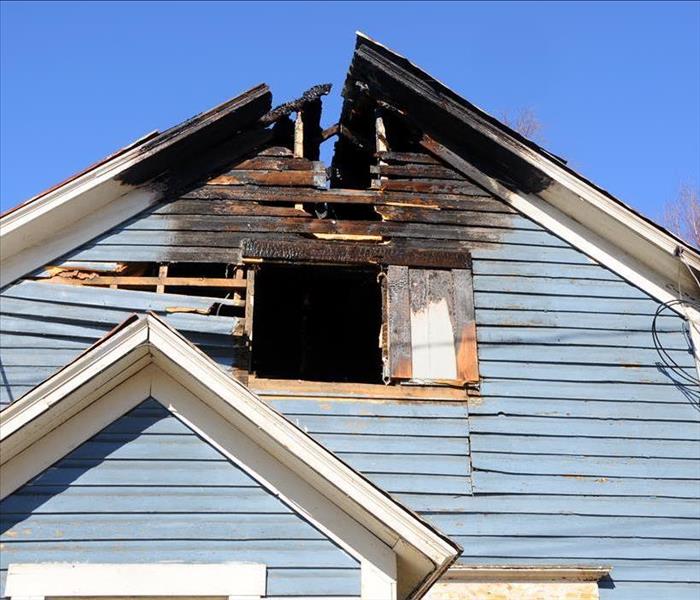 Roof damaged by fire.
Roof damaged by fire.
What Do I Do If a Fire Damages My Roof?
A fire can be devastating to a home or business. It can cause damage to your property and belongings, as well as create a danger for people in the area. If you've had a fire at your home or business, here's what you should do:
Contacting the Professionals
- Contact SERVPRO of Englewood/East Littleton to assess your fire damage. Call (303) 777-6498.
- If you don’t have insurance, contact the Colorado Division of Insurance for assistance in finding a professional contractor to repair your damaged roof. You can reach them at (303) 777-6498.
- Take care not to damage any electrical wiring or other systems during repairs – consult an electrician before attempting any work on these systems yourself!
1) Contact the Fire Department
If your house catches fire, the first thing you should do is call the fire department. The fire department will assess the damage and determine if evacuation is necessary. If so, the fire department will help with evacuation and cleanup.
2) Contact Your Insurance Company
After you’re sure that your family and home are safe, the next step is to contact your insurance company. Call your agent or the claims department of the insurance company. Your insurance provider should have a 24/7 emergency hotline number available in case of emergencies like this one.
3) Contact SERVPRO of Englewood/East Littleton
SERVPRO of Englewood/East Littleton is a full-service restoration company that can provide 24/7 emergency water removal and fire cleanup services. If you have questions about your property, please don't hesitate to give us a call at (303) 777-6498 or fill out our online contact form.
4) Start Removal of Debris
Once you've determined that your roof is damaged from a fire, it's time to start removing debris. This can be done in several ways, depending on the severity of the damage.
- Remove any fallen and dangling portions of the roof that may pose an immediate threat to people or property.
- Remove any smoldering wood, which is still hot enough to catch fire again if ignited by embers or sparks from other sources.
- If there is evidence of water damage due to sprinkler systems or hoses used during extinguishment efforts, check for mold growth with a moisture meter before proceeding further with repairs.
Placing a tarp on a roof after a fire can keep out the elements and prevent further damage to your home or business.
A tarp can be used to help protect your home or business from further damage. After a fire, it's important to have roof repair done as soon as possible. A tarp can prevent further water damage and keep out the elements while you're waiting for repairs.
We hope this article has given you an idea of what to do after a fire. If you have any questions, or if you would like to speak to one of our restoration specialists about your own situation, please contact us at (303) 777-6498.
3 Steps To Categorize Water Damage
8/26/2022 (Permalink)
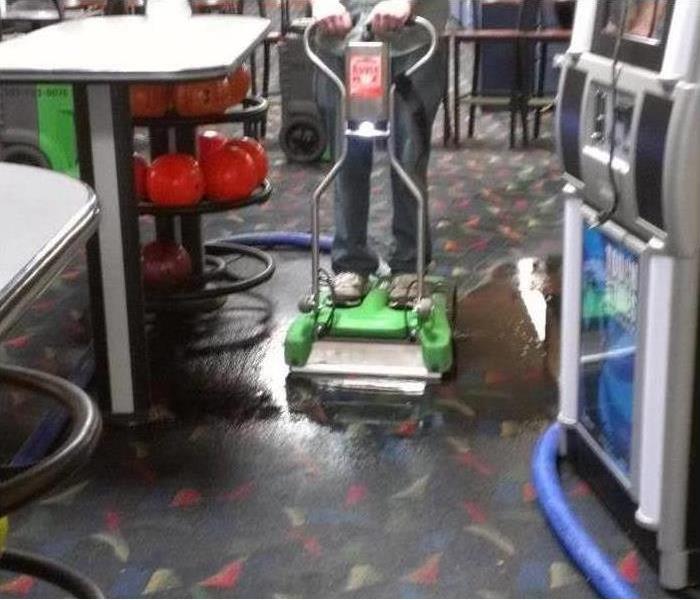 Commercial water damage in Littleton, CO
Commercial water damage in Littleton, CO
3 Steps To Categorize Water Damage
Categorizing water damage is an important step toward evaluating the severity of damage and determining restoration requirements. Building owners and managers can get a clearer sense of the severity of water or sewer damage by considering three aspects of damage to a commercial building in Littleton, CO.
1. The Source of Water
Water damage from broken or leaking supply lines tends to be clean, Category One water damage. This water has often undergone treatment to reduce contaminants and pathogens.
Category Two water damage originates from an overflowing shower, appliance or toilet, but does not contain solid waste. Category Three water from a sewer backup or external flood is the most contaminated type of water damage.
2. Where Water Leaks Flow
Water flowing down between levels of a structure degrades in condition. Clean water from a pipe leak becomes Category Two damage on a lower floor. Water from a sewage company: flooded toilets can also degrade further.
Like sewer damage, leaks between floors call for disinfection. Tearing out porous materials such as ceilings, carpets, and drywall may be necessary to discourage mold.
3. How Long Water Is Left Sitting
Within 24 to 48 hours, Category One damage can turn into contaminated Category Two damage that requires disinfection and may necessitate tearing out porous building materials.
Mold may also multiply in the same span of time after damage. Visible growth may become detectable as soon as 48 to 72 hours after the damage takes place.
The source and flow of water are important for determining the severity of recent water damage. Ongoing or past damage may result in secondary damage, such as mold. Property owners and managers may be able to do more accurate preliminary assessments based on these three factors, but the opinion of a restoration company can be helpful for restoring water or sewer damage at a building in Littleton, CO.
How to Resolve 3 Common Toilet Issues
6/22/2022 (Permalink)
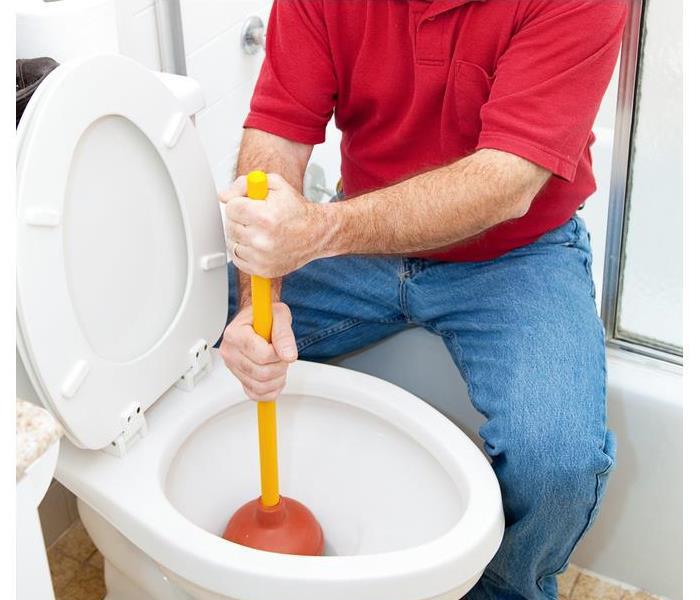 The most common way to unclog a toilet is by using a plunger.
The most common way to unclog a toilet is by using a plunger.
3 Common Toilet Issues and How to Fix Them
Every business in Cherry Hills Village, CO, has toilets available for use by employees and sometimes customers. If there are complications, such as toilet overflow, getting your toilets back up and running right away is essential. Here are some steps to resolve three common problems:
- clogged toilet
- overflowing toilet
- constantly running toilet
Unclog a Toilet
The most common way to unclog a toilet is by using a plunger. Be sure to wear rubber gloves. Ensure there is enough water in the bowl to cover the plunger head to get a better seal and remove the clog quickly.
Stop an Overflowing Toilet
Turn off the water and investigate the cause of the toilet overflow. Most of the time it is due to a clog, so follow the previous steps. Turn the water back on. Contact a water cleanup company to ensure your building does not suffer additional damage from the toilet flood.
Stop a Toilet From Flushing Constantly
Nothing is more annoying than having a toilet flush all the time. Surprisingly, it is usually an easy fix. Since most Cherry Hills Village, CO, companies have tankless toilets, here are steps to address constant flushing in this type of toilet.
Turn off the water to avoid toilet overflow by tightening the screw on the side. If there is a cap on top of the screw, pop it off.
Put a piece of paper over the lid on top to avoid damage. Then, loosen the cap with a wrench. Unscrew the rest by hand. Open the flange cover. Beware of water.
Remove the gasket. Clean off the sediment. Stick a small piece of wire through the weep hole to be sure it is not plugged.
Reverse the steps to put everything back together.
Using these tips can save you money and avoid downtime when toilet issues strike. It will make your employees and customers happy, too!
3 Ways To Conserve Water
4/16/2022 (Permalink)
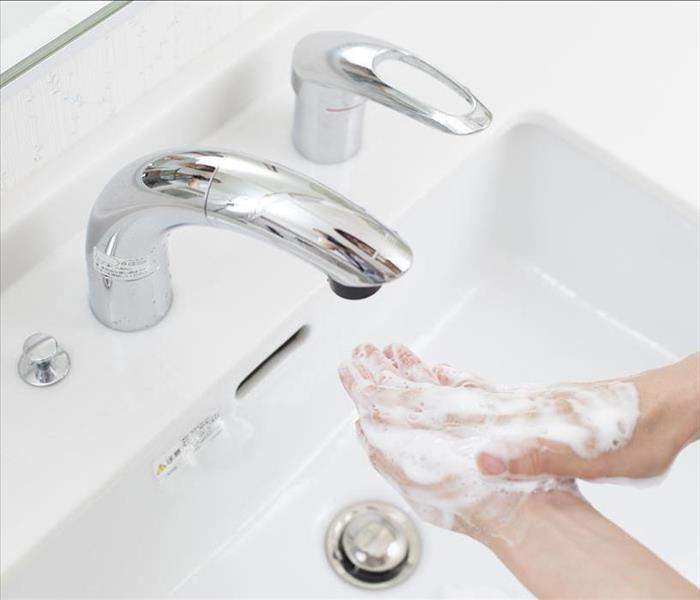 Install touch-free faucets
Install touch-free faucets
Three Water-Saving Techniques
Water issues in your community may have you looking for ways to cut costs and conserve water at your business in Park Meadows, CO. Not only is this good business sense, it's good for the environment, but it can be hard to know what to do. Here are three ways to conserve water.
1. Replace Faucets
Especially in a large office building, a lot of water gets used in bathrooms and kitchens. One water upgrade that will actually lower your monthly bills is to install touch-free faucets. The initial cost may be high, but the faucet won't be left running by a forgetful employee, and the upgrade will pay for itself over time. A less costly option is to replace the aerators on your faucets. Lower pressure means less water consumption. Hands still get clean, but you can save gallons of water.
2. Manage Irrigation
When does your irrigation schedule change? If the answer is "Never," it's an easy fix that will definitely save money and conserve water. There's no need to run the irrigation system during the rainy season. Even in dry seasons, you may not need to run the irrigation for as long as you think. The best way to decide this is to sub-meter your irrigation system so that you can see exactly how much water is being used for the plants. Try running the irrigation for ten fewer minutes at each session. If your plants don't die, you've found a way to save.
3. Check for Leaks
One major source of costly water issues is invisible leaks. There may be a single toilet in the building that runs all the time or a pipe deep in a wall that has developed a leak. If your water bill begins to creep up inexplicably, call a water damage restoration specialist to inspect your building. If they discover a leak, they will talk you through the process of getting it repaired, saving money and conserving water.
You care about the water issues in your community, your bottom line, and the environment. These tips can save money and conserve water for the benefit of your company and the community.
4 Ways to Minimize Mold Growth in a Vacant Rental
4/11/2022 (Permalink)
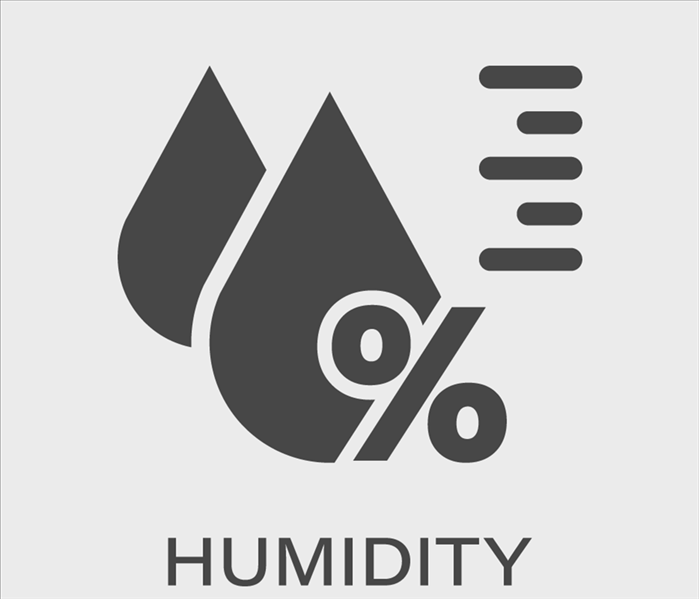 Monitor humidity levels.
Monitor humidity levels.
Mold Prevention
As a property owner in Cherry Hills Village, CO, there are always times when a rental is sitting empty. While, hopefully, that doesn’t last long, even a short time may result in unwanted issues. Mold prevention should always be a top priority. It only takes a little bit of excess moisture to bring mold spores to life. Below are four ways to avoid having to call a mold remediation and restoration specialist
1. Conduct Regular Inspections
The key to battling mold is finding it before it can spread. If there has been recent rain or other precipitation, inspecting the property is essential. Common areas for growth include attics, basements, and plumbing pipes and fixtures.
2. Turn the Water Off
Since mold loves moisture, the best mold prevention tip is to eliminate any potential sources. Turning off the water to the property will ensure that happens, as well as minimize the potential for a pipe burst. It is also important to ensure toilet tanks and bowls are empty to avoid mold growth. Before turning the water off, consider having an inspection done to find any potential leaks. Once the property is no longer vacant, the last thing you want to deal with is a plumbing issue.
3. Monitor Humidity Levels
If the humidity is high and there is hidden water damage, you can expect to have a fungus problem. Leaving the heat or air on, which will depend on the weather conditions, will make it easier to keep humidity levels below 60%. If the levels are difficult to maintain, it may be worth investing in a dehumidifier or upgrading the HVAC system with a dehumidifying option.
4. Consider Using Mold-Resistant Materials
After a tenant moves out, it creates a prime opportunity to upgrade the property. If you have experienced mold issues before, there are materials available designed to resist and prevent that from happening, such as primers and water-resistant wallboard.
Although mold spores may be everywhere, adding mold prevention to your to-do list can minimize the chances of them coming out of hibernation.
Building a Reliable First Aid Kit for Your Business
2/21/2022 (Permalink)
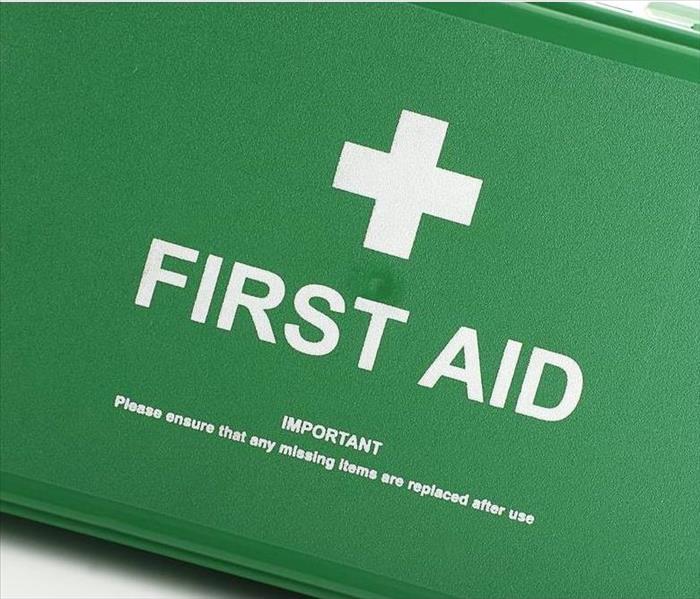 Having a first aid kit on hand in your business at all times is not only a good suggestion, it's a must.
Having a first aid kit on hand in your business at all times is not only a good suggestion, it's a must.
5 Qualities A Tenant Looks For In A Good Landlord
Having a first aid kit on hand in your business at all times is a must. However, that doesn’t mean you can stick with any old kit that you find lying around. In order to meet legal standards in Greenwood Village, CO, as defined by OSHA, your kit must include a number of specific items, including:
- 4x4” gauze pads
- 2 larger gauze pads, each measuring 8x10”
- Adhesive bandages in a box
- 2” wide packaged gauze roll
- 2 triangular bandages
- Wound-cleaning supplies, such as moist towelettes in sealed packages
- A pair of scissors
- A blanket (at least one)
- Tweezers
- Adhesive tape
- A pair of latex gloves (consider non-latex alternatives as well, in case one of your employees is allergic to latex materials)
- Resuscitation equipment such as a pocket mask
- 2 elastic wraps
- A simple splint
- A thorough set of directions on calling for and requesting the assistance of emergency service.
Furthermore, you’ll need more than one of these emergency kits to keep your workplace up to OSHA’s code. The 15-item first aid kit highlighted above is built to accommodate two to three people, meaning you’ll need several more kits on hand if you have significantly more employees.
Furthermore, each kit is placed on a per-workspace basis. If you have multiple operations occurring across your commercial spaces, you’ll require more kits regardless of how many employees you have working in each space at any given time.
Your employees are what keep your business moving forward year round, and you should be ready and able to offer them the care they require in the event of an emergency. Building a proper, OSHA-approved first aid kit may not completely solve every emergency situation, but it helps to set standards and build a good foundation for workplace safety for years to come.
How Tarps Help Mitigate Damage From a Fire
1/28/2022 (Permalink)
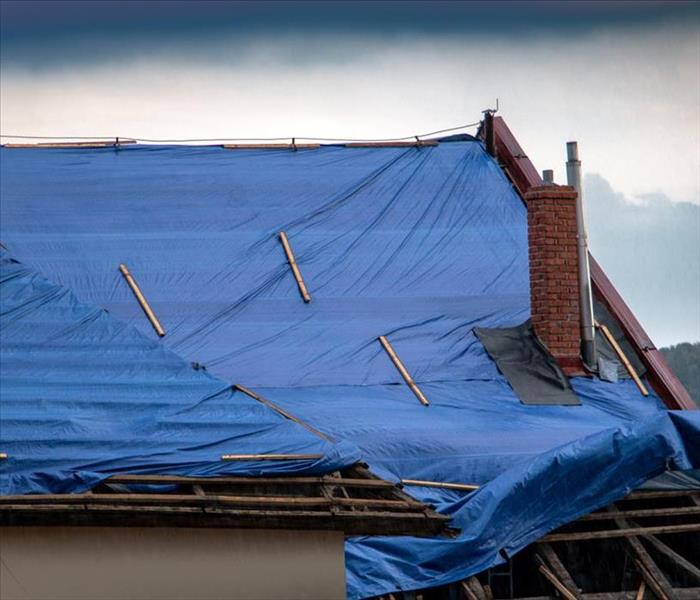 Part of your fire cleanup efforts should include using tarp services.
Part of your fire cleanup efforts should include using tarp services.
Tarp Services
A fire in your commercial building in Park Meadows, CO, can be a devastating experience. Even minor fires can have a drastic effect on you emotionally and financially. Larger fires can be life altering. Recovery isn’t easy, but there are ways to salvage parts of your property as well as your precious belongings inside. Fire cleanup is an important and intricate part of recovering. The fire department and other agencies will begin roof repair and will assess other damage to your property. One thing to focus on as well is tarp services. Placing tarps over your roof and other parts of the property will help prevent further damage.
1. Tarps will keep the rain and snow away. Firefighters use a lot of water to put out fires. When they took care of your commercial building fire, they likely damaged parts of your property as well as your possessions inside. Fire cleanup will help mitigate some of this damage, but tarp services will provide further assistance. When you place tarps over your damaged property, you’ll keep out more moisture from rain and snow. These elements would otherwise cause even more damage to the flooring and structural components of your building in Park Meadows, CO.
2. Tarps will keep out the wind. When a fire has damaged your roof and you’re waiting for roof repair, your facility will become vulnerable to wind as well. High winds could cause problems in your property and potentially worsen conditions inside. The wind might even compromise evidence to help determine how the fire started.
3. Tarps can keep people out. It’s unsafe for unauthorized people to enter a facility following a fire. Tarps will tell people to stay away and that conditions are not ideal for coming inside. These are a quicker and less expensive option than boarding up windows and open areas.
Part of your fire cleanup efforts should include using tarp services. This will help during roof repair and other restoration.


 24/7 Emergency Service
24/7 Emergency Service






